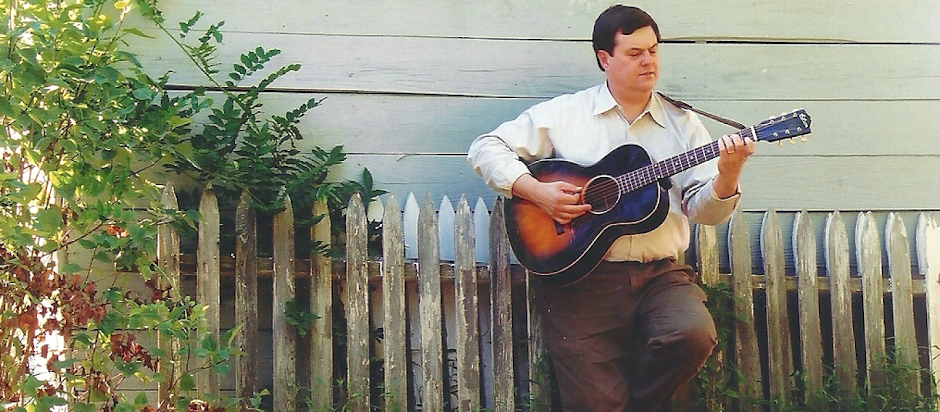Gordy’s 1951 Triumph Regent
A booming Epiphone archtop gets a second lifetime of use
__________________________________________
© 2019 — Kenneth Lelen — All Rights Reserved
 |
| Photo: Lark Street Music 1951 Epiphone Triumph Regent was played by Gordy Burgess for 50 years |
It has no pick-up or electric gizmos. Yet it has all the volume, projection and cutting power it needs to fill a ballroom.
It was played for 50 years by one man — John Gordon (Gordy) Burgess (July 1915 to March 2005) of Chicago IL. He played jazz guitar as well as harmonica his entire his life, according to his wife, Ginny Burgess of Altamonte Springs FL.
After she heard me perform a Vintage Music Concert at her retirement home in October 2005, she decided to give me her husband's guitar. At least, this way, it would be used, she concluded.
Gordy's guitar (SN 63217) was just 55 years old when I received it. It was in remarkable condition, lacking evidence of aging, with a bit of yellowing to its lacquer finish and white plastic parts to prove its age.
The nut width is 1-11/16-inch, which is standard on most archtop guitars of the day. And unlike Gibson archtops, which bury the truss rod adjustment in the headstock, this Epi's truss rod adjustment is set at the end of the fingerboard.
The original pickguard, gone before I got the guitar, was replaced in 2006 with a new unit by luthier Randy Wood of Bloomingdale GA. He also dressed the frets, adjusted the two-piece rosewood bridge and found a proper-fitting case for the instrument. A period D'Armond pick-up, which Gordy used on most occasions he played the guitar, was removed and stored in the case.
Lower bout width grew in 1937
Introduced in 1931 among Epiphone's carved-top guitars, the Triumph's lower bout originally was 16-3/8-inches wide. The guitar cost $125 — serious money for a professional musician.
 |
| Photo: VintAxe.com Catalog page for 1936 Epiphone Triumph archtop guitar with 17-3/8-inch wide non-cutaway body and $125 price |
A large polished nickel tailpiece was replaced by the lighter and now famous Frequensator frequency compensating tailpiece. It grouped the strings in two pairs — one length for the three bass strings and another, shorter length for the three treble strings.
In the mid- to late-1930s an Epi Triumph was regarded by musicians as one of the most versatile guitars of the Big Band Era. Compared to other orchestral archtops, the price was still competitive at $125.
Cutaway introduced in 1948
 |
| Photo: VintAxe.com Catalog page for 1950 Triumph Regent with 17-3/8-inch wide cutaway body |
Now 68 years old, this 1951 Triumph Regent is ready for a second lifetime. It already has a voice that rivals a noncut archtop in volume, projection and tonal response.
Or, as vintage dealer Buzz Levine of Lark Street Music in Teaneck NJ said when he saw this big jazz box, "It has drenchingly beautiful tone."
_____________________________________________
© 2019 — Kenneth Lelen — All Rights Reserved

No comments:
Post a Comment